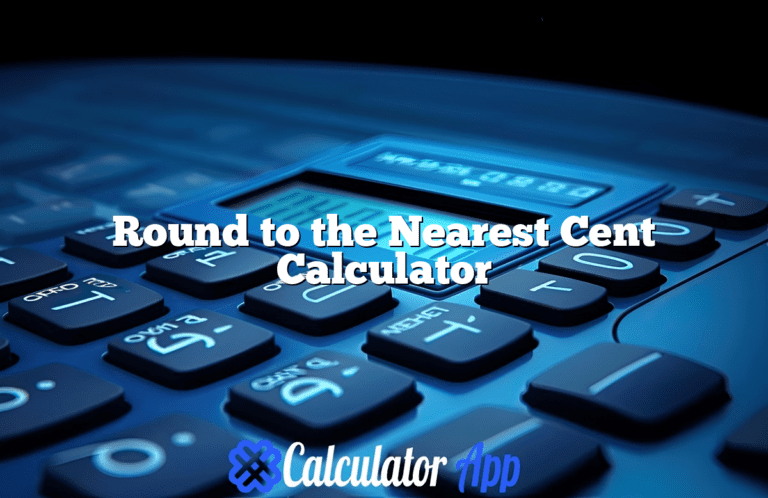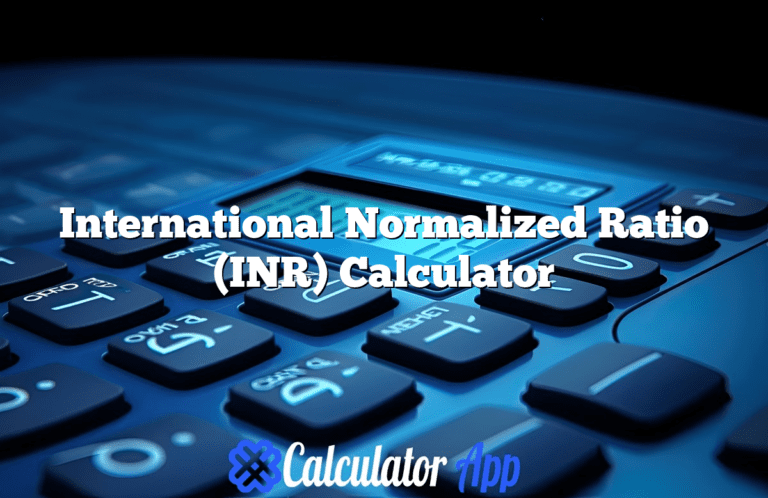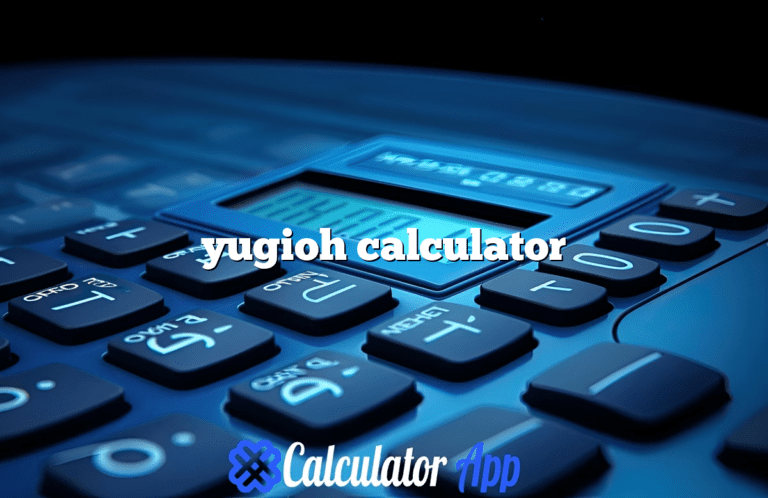M to FEET Converter
1 M is equal to 3.28 FEET.
Introduction to the Meters to Feet Conversion Calculator
The meters to feet conversion calculator is an essential tool designed to facilitate the conversion between two units of measurement commonly used in various fields. Meters, a metric unit, are predominantly employed in scientific contexts and international standards, while feet, a unit often used in the United States and the United Kingdom, serve practical purposes in everyday applications. Understanding the relationship between these units and effectively converting one to the other is crucial for accuracy, particularly in education, construction, and personal projects.
This calculator simplifies the otherwise cumbersome conversion process by providing a quick and user-friendly method to obtain accurate results. Users only need to input a value in meters, and the calculator immediately generates the equivalent in feet. This functionality streamlines activities that require precise measurements, allowing individuals and professionals to save time and reduce the risk of error.
The significance of the meters to feet converter extends across various contexts. For instance, in education, students often encounter these measurements in physics or mathematics lessons, necessitating an understanding of how to convert between them. In the construction industry, accurate conversions are vital for blueprint accuracy and project planning, helping to ensure that dimensions align with specifications. Additionally, for personal projects such as home renovation or gardening, knowing how to convert between these units plays a key role in achieving the desired outcomes.
By offering an intuitive solution for converting meters to feet, this calculator not only enhances precision but also serves to bridge the gap between metric and imperial systems. As users become increasingly aware of its value, they can approach tasks involving measurement with greater confidence and ease.
Features of the Meters to Feet Conversion Calculator
The Meters to Feet Conversion Calculator is a highly efficient tool designed to provide accurate and swift conversions from metric units to imperial units. One of its primary features is its remarkable accuracy; it utilizes precise mathematical algorithms to ensure that users obtain reliable results within seconds. This accuracy is crucial for a range of applications, including engineering, construction, and scientific research, where even minor discrepancies can lead to significant issues.
Another key aspect is the calculator’s user-friendly interface. It is designed with simplicity in mind, allowing users of all skill levels to perform conversions effortlessly. Whether a user is converting measurements for personal projects or professional purposes, the process is straightforward. Users simply input the value in meters, and with a single click, they receive the corresponding value in feet, thereby enhancing efficiency and reducing time spent on conversions.
Moreover, the Meters to Feet Conversion Calculator offers potential integrations with various tools and applications, making it a versatile addition to any workflow. It can easily be embedded into websites, mobile applications, or used alongside other resources, which facilitates seamless data processing and enhances productivity. Users who frequently deal with various measurement conversions can benefit significantly from this functionality.
Some specific advantages include speed, as the calculator processes requests almost instantaneously; convenience, since it can be accessed from any device with internet connectivity; and reliability, due to its consistent performance under varied circumstances. These features make the Meters to Feet Conversion Calculator not only a practical choice for professionals but also an indispensable tool for anyone who regularly engages with metric and imperial measurements.
Advantages of Using the Calculator
The meters to feet conversion calculator offers several notable advantages over traditional manual conversion methods. One of the primary benefits is the considerable time-saving effect it provides. When engaged in tasks that require frequent conversions, such as construction, landscaping, or any project requiring precise measurements, utilizing a calculator allows professionals to quickly obtain results without tedious calculations. This efficiency is especially beneficial in high-paced environments where delays can lead to additional costs and resource wastage.
Another key advantage is the significant reduction in errors that can occur during manual calculations. The risk of miscalculation, especially in complex measurements, can lead to dire consequences, such as structural flaws or inaccuracies in planning. By relying on the meters to feet conversion calculator, users can trust that the results are consistent and accurate. This reliability is essential in professions where precision is paramount, such as engineering and architecture.
Moreover, using a calculator can enhance overall productivity. By streamlining the conversion process, professionals can focus on other critical aspects of their work rather than getting bogged down in arithmetic. This not only improves individual efficiency but also contributes to team effectiveness in collaborative projects.
In various scenarios, such as converting heights for sports facilities, determining lengths of materials for renovation, or even in educational settings for teaching purposes, the benefits of the calculator are evident. Its user-friendly interface allows for immediate access to conversion results, making it an indispensable tool for anyone working in fields that require accurate measurement specifications.
In summary, the meters to feet conversion calculator not only saves time and reduces errors, but it also enhances productivity across numerous tasks. The seamless integration of this tool into daily operations can lead to more streamlined workflows and ultimately, more successful outcomes in projects. Utilizing such tools is a sound decision for those who frequently deal with conversions, ensuring accuracy and efficiency in their respective fields.
How to Use the Meters to Feet Conversion Calculator
Utilizing a meters to feet conversion calculator is a straightforward process that can provide instant results. To begin using the calculator, first ensure you have the right tool readily available, either online or as an application. The primary function of these calculators is to convert measurements easily, simplifying tasks that involve distance calculations. (See Also: Anniversary Calculator)
Start by identifying the input field designated for meters. This is where you will enter the measurement you wish to convert. Most calculators accept numerical values, including decimals, so be precise with your entries. For instance, if you are converting 5 meters, type ‘5’ into the appropriate box.
After entering the desired value in meters, check for any additional settings that may enhance your conversion process. Some calculators offer options to convert to various units of measurement or to include both a detailed output and graphs for better visualization. If these options are available, select the desired settings to customize your results according to your needs.
Once you have inputted the value and adjusted the settings, find the button that initiates the conversion process. This is often labeled as “Convert” or “Calculate.” Upon clicking this button, the calculator will process your input and display the equivalent measurement in feet. The result is typically shown immediately or may be presented on a separate results page, depending on the calculator’s design.
Additionally, many calculators include a reset or clear option, allowing you to start over without needing to refresh the page entirely. This feature proves useful for users who require multiple conversions in succession. By following these steps, users can efficiently navigate the meters to feet conversion calculator, ensuring a seamless conversion experience.
Benefits Compared to Manual Methods
The conversion from meters to feet is a common requirement in numerous fields, ranging from construction and engineering to education and scientific research. Utilizing a meters to feet conversion calculator offers several advantages over manual calculations that can significantly enhance both efficiency and accuracy.
One primary benefit of using a conversion calculator is increased accuracy. Manual calculations are prone to human error, especially when dealing with decimals and larger numbers. A simple miscalculation can lead to significant discrepancies in measurements, potentially compromising the quality of a project or an experiment. In contrast, a calculator ensures precise conversions, eliminating the possibility of such errors. For instance, in scientific research, where measurements are critical, the need for accurate data cannot be overstated.
Moreover, the speed of using a conversion calculator cannot be matched by manual methods. Manually converting measurements takes time, requiring not just computation but also verification of results to ensure correctness. Conversely, a calculator provides immediate results, which is particularly beneficial in high-pressure environments such as construction sites or during time-sensitive projects. The ability to quickly convert units can streamline workflows and facilitate decision-making processes.
User-friendliness is another significant advantage of a meters to feet conversion calculator. Many calculators are designed with intuitive interfaces that guide users through the conversion process. This feature proves handy, particularly in educational settings where students may struggle with mathematical concepts. By simplifying the conversion process, calculators not only enhance learning but also build confidence in students’ abilities to handle measurements and conversions.
In summary, the meters to feet conversion calculator offers distinct advantages in terms of accuracy, speed, and user-friendliness compared to manual methods. Whether in educational or professional settings, its efficiency makes it a valuable tool for anyone needing precise unit conversions.
Practical Applications of the Calculator
The meters to feet conversion calculator serves a vital role across a myriad of fields, ensuring precise measurements and efficient workflow. In the engineering sector, for instance, professionals often rely on this tool during the design and construction phases of a project. Measurements in meters are standard in many parts of the world; however, projects in the United States may necessitate conversions to feet. Using the calculator, engineers can quickly and accurately transform measurements, minimizing errors that could arise from manual calculations, thus streamlining the design process and enhancing productivity.
Similarly, in architecture, the meters to feet conversion calculator is indispensable. Architects frequently develop blueprints where dimensions are detailed in metric units. Converting these figures into feet allows for better communication with contractors and clients who may be more accustomed to the imperial system. For example, a room dimension stated as 5 meters can be instantly converted to approximately 16.4 feet, ensuring that all stakeholders are aligned, which ultimately facilitates a smoother construction process. This practical application not only aids in collaboration but also maintains the accuracy of spatial design.
In addition to these professional uses, the calculator finds relevance in everyday life. Many individuals engage in home improvement projects, travel, or cooking, where measuring distances or sizes in different units becomes necessary. For instance, if one is traveling to a country that uses metric measurements, knowing how to convert kilometers to miles or meters to feet enhances travel planning. Ultimately, the meters to feet conversion calculator is a versatile tool that boosts efficiency in professional settings and day-to-day tasks alike, highlighting its usefulness in various contexts. (See Also: Round to the Nearest Cent Calculator)
Unique Selling Points of the Calculator
The meters to feet conversion calculator stands out in a crowded market due to its user-centered design, accessibility features, and multifunctional capabilities. The intuitive user interface ensures that even those who are not technologically savvy can utilize the calculator with ease. Clean graphics and simple navigation foster a seamless experience, encouraging greater engagement and reducing the likelihood of user frustration.
One of the most notable features of this calculator is its real-time conversion capability. Users can input their measurements in meters, and the calculator instantly provides the equivalent value in feet. This immediate feedback significantly enhances the user experience by saving time and minimizing the risk of errors. Additionally, the inclusion of conversion options for other units of measurement—such as centimeters to inches—adds a layer of functionality that broadens its appeal to a wider audience.
Accessibility is another crucial aspect that sets this calculator apart. The design includes features that cater to individuals with disabilities, such as screen reader compatibility and keyboard navigation options. This commitment to inclusivity ensures that all users can effectively use the calculator regardless of their specific needs.
Furthermore, the calculator integrates interactive features, such as a history log that allows users to track their recent conversions. This feature is particularly beneficial for professionals who frequently require quick measurements, as it eliminates the need to repeatedly input the same data. Additionally, the calculator is optimized for mobile use, ensuring that users can access the tool conveniently from their smartphones or tablets.
In summary, the combination of a user-friendly interface, real-time functionality, accessibility features, and mobile compatibility makes the meters to feet conversion calculator a standout choice for anyone in need of accurate and efficient measurements. Its innovative features significantly enhance the overall user experience, establishing it as a reliable resource in conversion needs.
Tips and Troubleshooting
Utilizing a meters to feet conversion calculator effectively requires both familiarity with the tool and an understanding of common pitfalls. To enhance your user experience and optimize your proficiency, consider the following tips. First and foremost, ensure that you enter the correct value in meters. Double-checking your input can prevent unnecessary errors in conversion. Remember, the accuracy of your result directly correlates to the precision of the original figure you provide.
Furthermore, familiarize yourself with the interface of the calculator. Different calculators may present unique layouts or functions. Taking a moment to review any available guides or tutorials can elucidate how to navigate the tool deftly, making your conversions smoother and faster. Additionally, many calculators include options for converting multiple values at once, so explore those features to enhance efficiency.
If you encounter issues during your calculations, consider refreshing the webpage or clearing your browser’s cache to resolve potential glitches. It is not uncommon for software to behave erratically due to temporary glitches or outdated sessions. If your calculator is unresponsive, check your internet connection as hosting problems may stem from connectivity issues.
Another effective strategy is to record the most common conversions you perform. Creating a reference table or note containing frequently used conversions can save time and enhance your process. Additionally, if using a mobile calculator app, ensure that it is updated to the latest version to benefit from any bug fixes or enhancements.
Finally, for those who may wish to verify their results, using multiple calculators can relieve any capacity for error. Cross-referencing outcomes strengthens reliability, thereby allowing you to trust your conversion results confidently. This practice is especially useful in professional settings where precision is paramount.
Frequently Asked Questions (FAQs)
When utilizing the meters to feet conversion calculator, users often have several common questions. Below are some of the most frequently asked questions along with their respective answers to clarify any confusion regarding its functionality, use cases, and best practices.
1. How do I use the meters to feet conversion calculator?
To use the calculator, simply input the measurement in meters that you wish to convert. After entering the value, click on the ‘Convert’ button, and the calculator will instantly provide the equivalent measurement in feet.
2. What is the formula for converting meters to feet?
The formula for converting meters to feet is straightforward. One meter is equivalent to approximately 3.28084 feet. Therefore, to convert meters to feet, multiply the number of meters by 3.28084.
3. Can I use the calculator for larger measurements?
Yes, the meters to feet conversion calculator is designed to handle both small and large values. Whether you are converting a few meters or several kilometers, the calculator will accurately convert all input values to feet.
4. Is there a way to reverse the conversion?
Absolutely. Most online meters to feet conversion calculators also provide a reverse function, allowing you to convert feet back into meters by inputting the feet measurement and using the appropriate conversion factor.
5. Are there any best practices to keep in mind while using the calculator?
It is advisable to double-check your inputs before initiating the conversion. Additionally, for professional use or precise applications, consider validating the results with multiple calculators or referencing reliable measurement tables.
6. Is the calculator mobile-friendly?
Many meters to feet conversion calculators are mobile-optimized, providing users with easy access to conversions on smartphones and tablets, facilitating quick calculations on the go.
7. Can I convert meters to other units of measurement using this calculator?
Typically, meters to feet conversion calculators focus specifically on this conversion. However, some comprehensive calculators may offer the option to convert meters into other units, such as inches or centimeters.
Conclusion
In summary, the meters to feet conversion calculator serves as an indispensable tool for individuals and professionals alike who frequently deal with measurements across different systems. Throughout this guide, we have highlighted the key features and benefits of utilizing this calculator, emphasizing its accuracy and ease of use. By simplifying the conversion process, it eliminates the potential for errors that can occur when manually calculating values, thereby enhancing overall efficiency.
The significance of being able to quickly convert meters to feet cannot be overstated. Whether for educational purposes, construction projects, or day-to-day use, having immediate access to reliable conversions can save time and enhance productivity. Additionally, the calculator caters to a wide audience, from students working on physics assignments to architects planning building layouts, showcasing its versatility across various fields.
Furthermore, we discussed the importance of understanding measurement units and the relevance of conversions in global contexts, where different regions may adopt varying systems. Knowing how to effortlessly switch between meters and feet not only facilitates communication but also ensures accuracy in measurements. Opting for a conversion calculator underscores a proactive approach towards precision in tasks requiring dimensional clarity.
We encourage readers to explore and utilize the meters to feet conversion calculator, as it can significantly streamline their measurement tasks. As technology continues to evolve, the integration of such tools into daily routines is becoming increasingly vital. By harnessing the power of the calculator, users can enhance their efficiency and ensure accuracy in various applications. Therefore, we invite you to try it out and experience its full potential in meeting your measurement needs.






